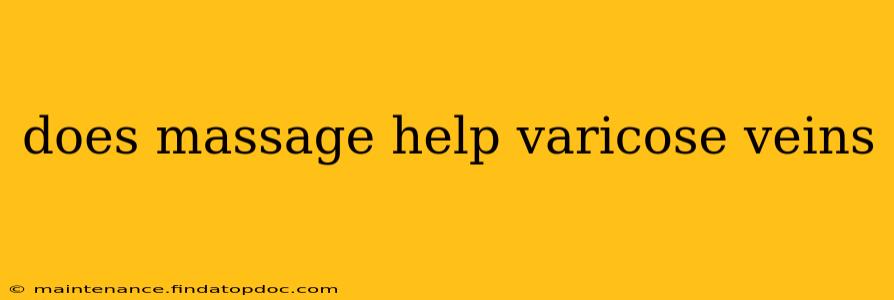Varicose veins, those unsightly and sometimes painful swollen veins, affect millions. Many seek natural remedies, and massage often arises as a potential solution. But does massage truly help varicose veins? The answer is nuanced, and this article will delve into the benefits, limitations, and what you should know before incorporating massage into your varicose vein management plan.
What are Varicose Veins?
Before exploring the role of massage, let's understand varicose veins. These bulging, twisted veins occur when the valves inside the veins weaken, allowing blood to flow backward. This pooling of blood causes the veins to become enlarged and visible beneath the skin. Common symptoms include aching, heaviness, swelling, and throbbing in the legs. Risk factors include genetics, prolonged standing or sitting, pregnancy, obesity, and aging.
Can Massage Improve Varicose Vein Symptoms?
While massage won't cure varicose veins, it can offer some relief from associated symptoms. Gentle massage can improve circulation, reducing swelling and alleviating some discomfort. The improved blood flow can help to lessen the feeling of heaviness and aching in the legs. However, it's crucial to remember that this is a symptomatic treatment, not a cure.
What Types of Massage are Beneficial?
Not all massage techniques are suitable for varicose veins. Avoid deep tissue massage, as it can potentially damage the already weakened veins. Instead, focus on gentle techniques like:
- Lymphatic drainage massage: This specialized massage technique promotes the movement of lymph fluid, helping to reduce swelling and inflammation.
- Light stroking and compression: Gentle strokes in the direction of the heart, combined with light compression, can improve blood circulation without putting undue stress on the veins.
Does Massage Prevent Varicose Veins?
No, massage cannot prevent the development of varicose veins. While improving circulation is beneficial for overall health, it doesn't address the underlying causes of venous insufficiency—the weakened valves that allow blood to pool. Preventing varicose veins requires addressing lifestyle factors such as maintaining a healthy weight, regular exercise, and avoiding prolonged periods of standing or sitting.
What are the Risks of Massaging Varicose Veins?
Improper massage techniques can worsen varicose veins. Aggressive massage can damage the already fragile veins, leading to bleeding or further inflammation. Always consult a healthcare professional or a qualified massage therapist experienced in working with individuals who have varicose veins before starting any massage therapy.
Are there other treatments for varicose veins?
Yes, several other treatments are available for varicose veins, ranging from conservative measures to medical interventions. These include:
- Compression stockings: These help to improve blood flow and reduce swelling.
- Lifestyle changes: Maintaining a healthy weight, regular exercise, and elevating your legs can significantly impact symptoms.
- Sclerotherapy: This involves injecting a solution into the vein to close it off.
- Endovenous ablation: This uses heat or laser energy to close off the affected vein.
- Surgical removal: In severe cases, surgery might be necessary to remove the varicose veins.
When Should I See a Doctor About My Varicose Veins?
Consult a doctor if you experience:
- Severe pain or swelling
- Skin changes around the veins (e.g., discoloration, ulcers)
- Bleeding from the varicose veins
- Significant discomfort that interferes with daily activities
In conclusion, while massage can provide some relief from the symptoms of varicose veins, it's not a cure and should be approached cautiously. Always consult a healthcare professional before starting any massage therapy for varicose veins to ensure it's a safe and appropriate treatment option for you. They can also advise on other treatments and management strategies to address the underlying condition.
